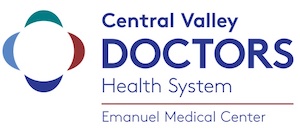Emanuel Medical Center Encouraging Community to Assess Stroke Risk
May 20, 2019May is National Stroke Awareness Month and Emanuel Medical Center is raising awareness about the signs and symptoms. Many are familiar with strokes and the devastating effects they can have on victims. Strokes are the fifth leading cause of death in the United States and a leading cause of disability. However, strokes can be preventable with healthy lifestyle choices and knowing your risk.
BE FAST is a good way to recognize the symptoms of a stroke, and it’s a reminder to get help quickly. Every minute counts when it comes to having a better outcome and recovery from a stroke. Here’s how to recognize symptoms of a stroke for yourself or someone close to you:
B – Balance – Is there a loss of balance, coordination or trouble walking?
E – Eyes – Is it difficult to see in one or both eyes?
F – Face – When the person smiles, does one side of the face droop?
A – Arms – Does one arm drift down when the person raises both arms?
S – Speech – Is speech strange or slurred?
T – Time – Don’t wait to call 9-1-1 if you see any of the above signs.
Additional symptoms of a stroke include sudden:
- Numbness or weakness, especially on one side of the body – face, arm or leg
- Confusion in speech – understanding or speaking
- Extreme headache – unknown cause
What is a stroke?
A stroke, also known as a brain attack, occurs when blood flow to the brain is interrupted or blocked. When this happens, brain cells in the immediate area start to die because they do not get the oxygen and nutrients they need to function properly. Disabilities that can result from a stroke include:
- Paralysis
- Cognitive or memory deficits
- Speech and emotional problems
- Pain and numbness
Approximately 87 percent of strokes are ischemic, which means they occur when a clot blocks a blood vessel or artery in the brain. The remaining percentage of strokes is hemorrhagic. These strokes are caused by a blood vessel that breaks and bleeds into the brain. In either case, the faster blood flow is restored to the brain, the lower the risk of disability or death. So the sooner a person gets to a hospital, the quicker the diagnosis and ability to prevent long-term damage.
Stroke treatment
There is no home remedy for a stroke. It’s important not to wait for symptoms to go away or worsen. Ischemic strokes can be treated with a clot-busting drug called tissue plasminogen activator, or t-PA. However, for the treatment to be effective, the stroke patient must get to a hospital within one hour, be evaluated and receive the drug within three hours of the onset of stroke symptoms (or up to 4.5 hours for certain eligible patients). A study by the National Institute of Neurological Disorders and Stroke found that some patients receiving t-PA within the three-hour window were at least 30 percent more likely to recover from a stroke after 90 days.
Risk factors that can increase the chances of having a stroke include high blood pressure, heart disease, elevated cholesterol, diabetes, sedentary lifestyle and smoking. Knowing the symptoms of a stroke – and acting on them FAST – can save your life or the life of someone you care about.
To take a free online health assessment to learn your risk of stroke, click here. Or go to www.emanuelmedicalcenter.org and search for “Health Risk Profilers.”


